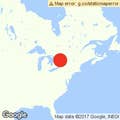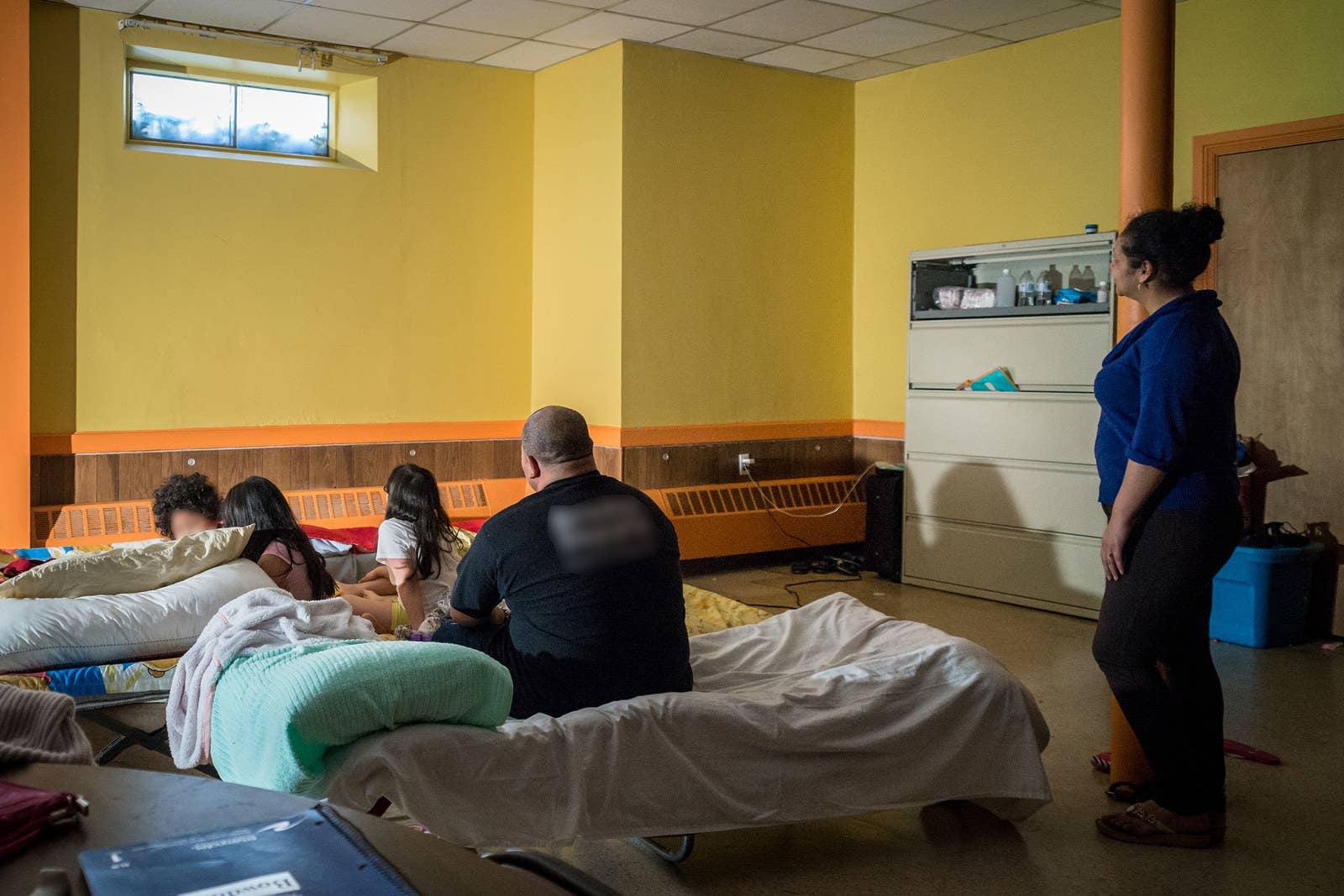
Martha never imagined she’d be in an upstate New York church basement hiding from the US government, far from the troubled El Salvador she had left behind years ago and very different from the life she had slowly built in Virginia.
The ascension of Donald Trump to the White House after threatening to deport high numbers of undocumented immigrants — combined with the prospect of being separated from their US-born daughters and the fact that Immigration and Customs Enforcement (ICE) was on her husband’s heels — drove them into hiding to wait for an asylum interview in Canada.
“A lot of people like us are desperate, looking for where to run because they can’t be here, because of this man,” Martha, who has lived in the US for 16 years, told BuzzFeed News in a recent interview.
The family declined to use their real names out of fear of retaliation from US immigration authorities.
“When you come to this country, you come with nothing, zero, and little by little you build a life," Martha said. "Then, suddenly you have to make a decision you never thought you’d have to make: leave and start over again.”
Her family is part of a small but growing number of immigrants who lived in the US for years and are being ferried to the Canadian border via an underground network of churches and immigration rights groups. Rev. Justo Gonzalez II of Pilgrim St. Luke’s in Buffalo, New York, said that so far they’ve helped 20 people, including six children, get to Canada to petition for asylum.
During a recent visit by BuzzFeed News, there were nine people, including Martha’s family, waiting at the church to make the same journey.
Vive, a Buffalo-based organization that helps refugees, reached out to Gonzalez and other sites when they started seeing large numbers of immigrants asking for their help getting to Canada. As a precaution, Gonzalez set up additional security cameras around the church, and everyone has to be buzzed in during non-mass hours. Volunteers patrol the building during mass to make sure no one is there to harass their guests.
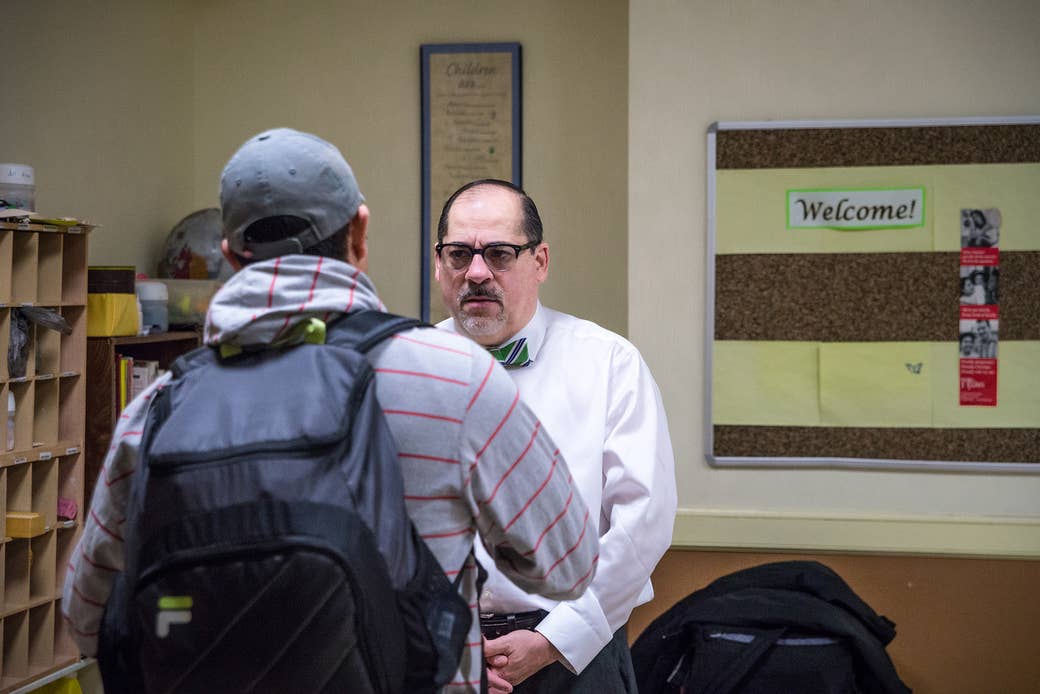
The church itself looks like a stone castle fortress with turrets at the top of columns and a gay pride flag hanging near its red doors.
“I’m stepping out because my faith compels me to, because I truly believe, and so does my congregation, that we are on the right side of justice,” Gonzalez said. “I’m certainly not looking to pick a fight with the federal government, but at the same time, as man of faith, if I don’t stand up for what I believe in, what the hell am I doing on the pulpit?”
Gonzalez and other churches throughout the country started to lay the groundwork for this “network” earlier this year, but the Trump crackdown on those living in the US illegally has brought it to life earlier than planned.
“Our intent was to get better organized before we activated this, but the need is so strong that we just activated it,” Gonzalez said of the operation. “They’re doing it because of fear of the new administration.”
The Trump administration is moving to quickly expand the deportation system it inherited from the Obama administration, which deported at least 2.4 million undocumented immigrants, though figures for his last year in office are not yet available. ICE has already identified 33,000 additional beds at 27 locations to hold more detainees for deportation, federal officials are discussing possible agreements with local jurisdictions to enforce immigration laws, and US Customs and Border Protection is looking at relaxing hiring standards to more easily beef up its ranks.
At the same time, within 100 days of President Trump’s executive order expanding the mandate of federal immigration officials to deport nearly everyone living in the US illegally regardless of criminal records, the government this past week reported the arrests of more than 41,000 undocumented immigrants, a 38% increase compared to the same period last year.
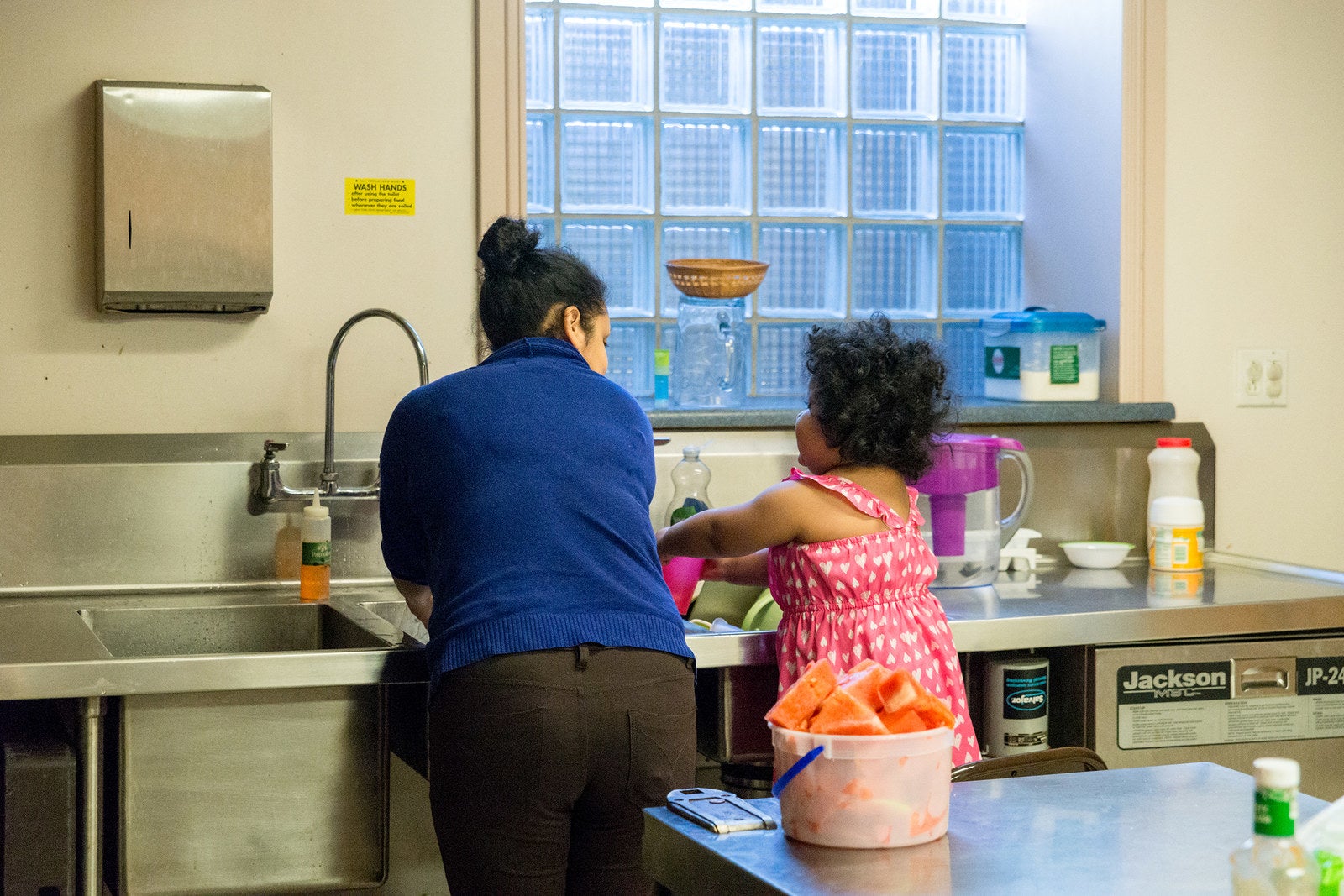
Martha and her husband, Moises, didn’t wait to see what Trump’s “deportation force” would look like and began preparing to leave for Canada in February. Until they could get their initial asylum interview with Canadian authorities, they spent weeks in limbo waiting for the phone call that would send them to the border.
The family slept on an inflatable bed and three cots inside a yellow and orange mini-auditorium, one floor directly below the pews of Pilgrim St. Luke. Across from them, on the stage, another family, a father and his two sons from Colombia, slept under fluorescent lights.
They didn’t leave the church often, just to go shower at a parishioner’s house or go shopping, though Rev. Gonzalez reminded them to always “walk like they own the place” whenever they left the walls of their sanctuary.
The oldest of the five kids hiding in the church was 13; the youngest, 2. To pass the time, they usually played cards, assembled puzzles, or watched YouTube.
Hunkered down in the church basement, hundreds of miles from the life they had built in Virginia, Moises and his family were a long way from what almost became his worst fear realized.
“Now we’re on the run, like we’re murderers or something."
In 2015, Moises left for work 90 minutes before ICE agents banged on his windows at 6 a.m. with flashlights, demanding he open the door.
His mother, who was visiting from El Salvador, his wife, and their daughters hid inside the girls’ room. Martha pulled her daughters to her chest to comfort them — but also to keep their sobs from being heard by agents outside.
ICE agents came back two more times after that, and each time the family hid at a friend’s home until they felt safe enough to return, though they kept a lookout for cars they didn’t recognize before venturing out.
“Now we’re on the run, like we’re murderers or something,” Moises said. “It’s traumatizing for my daughters.”
He doesn’t like that his daughters had to grow up faster than other kids their age, noting that his oldest, 10-year-old Elizabeth, wants to be an immigration attorney. His main concern was that he and his wife would be put in detention and their daughters would be shipped off to a relative’s house.
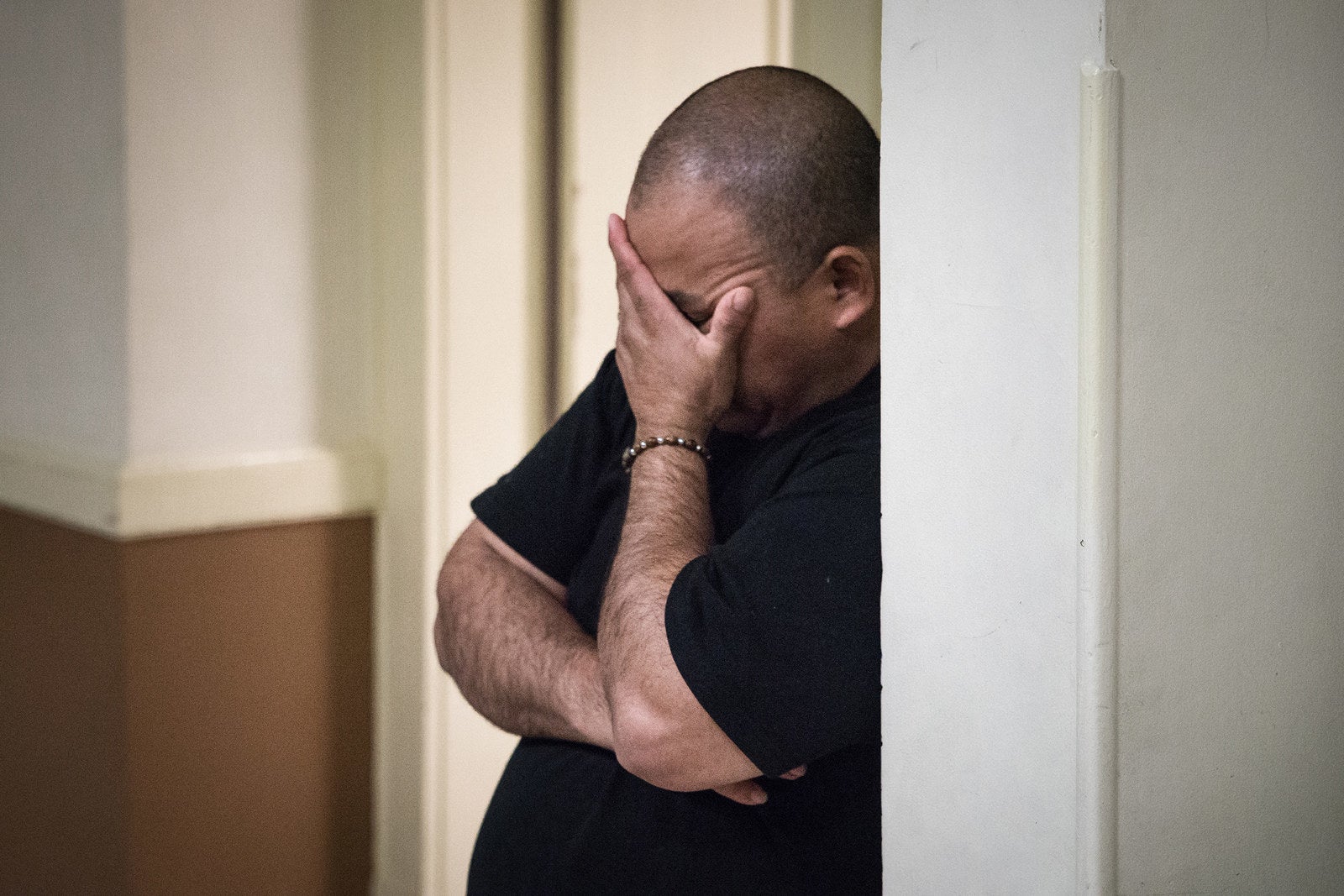
On a recent afternoon, Martha hurriedly patted the doughy masa that would soon be stuffed with cheese and beans to make pupusas, a traditional Salvadoran dish. The two families and local supporters ate and chatted, with the conversation eventually turning to immigration, as it so often does in the basement.
“They say we’re a bunch of freeloaders,” Martha said.
“Who says?” Maria Elena, one of the congregants who was visiting the family, responded.
“People. They say they provide for our kids, but they’ve never taken care of my kids,” Martha said.
“The United States we know now, is not the United States we knew,” Maria Elena said.
“You can’t go to the cops — all you can do is flee with your life.”
Moises came to the United States in 2000, chasing the American dream while running from gang members in El Salvador who had nearly beaten him to death in an alley after he refused to join their ranks. They broke his fingers, cut his arms and hands, and knocked out some of his teeth.
“If you don’t say yes, you sign your death sentence. If you move to another area, they’ll find and kill you,” Moises said, pointing to the scars on his left hand. “You can’t go to the cops — all you can do is flee with your life.”
After the gang members left him for dead, Moises set off for the US the next day, eventually ending up in Virginia, where he would meet his future wife, Martha. She had also fled poverty and gang violence in El Salvador, which according to the State Department has one of the highest homicide rates in the world.
Moises was caught and deported by US immigration authorities three times. He was detained a fourth time in 2001, but they couldn’t deport him to El Salvador because a series of earthquakes that struck the region made Moises eligible for temporary protected status, which deferred his deportation. ICE, however, came knocking after he didn’t leave the United States when his protection was rescinded in 2007.
He started working for a construction company, where he became a forklift operator and eventually ran the company's bodega. Before they left for Buffalo, they rented a home in Virginia and owned two cars, the only possessions they were able to sell. Martha stayed home with the girls after years of working at restaurants.
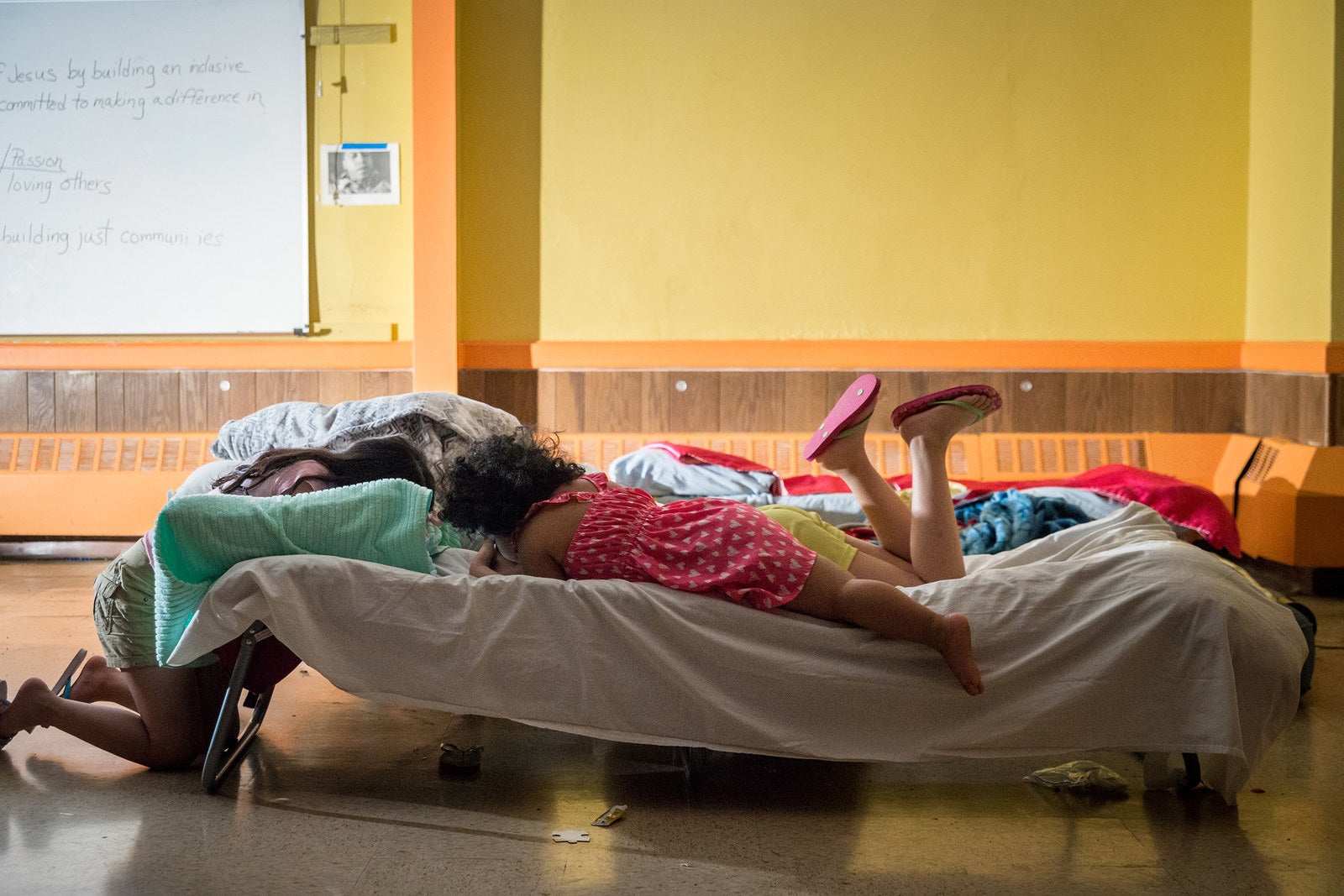
Typically, their family wouldn’t be able to seek asylum in Canada under the Safe Third Country Agreement in which refugees seeking protection do it in the first “safe country” they arrive in — in this case, the United States. But there are exceptions: people who have immediate family in Canada, unaccompanied minors under 18, petitioners with a valid Canadian visa, and those who have been charged with a crime that could subject them to the death penalty in the US or a third country.
Moises has a sister in Canada, which allowed him, his wife, and their US-born daughters to apply for asylum.
“For 16 years, we held on to the hope that things would get better for us, but it's only gotten worse,” Moises said.
The Safe Third Country Agreement also doesn’t apply to people seeking asylum who enter Canada illegally and present themselves at an immigration office inside the country. And the number of immigrants going that route, crossing illegally in freezing temperatures, has been on the rise in recent months.
From January to March, 8,960 people have filed asylum claims in Canada, according to figures published by the Canada Border Services Agency. Of those, 1,860 people were caught by the Royal Canadian Mounted Police trying to cross the border illegally.
In 2016, the Immigration and Refugee Board of Canada accepted 152 refugee protection claims, which include asylum, from El Salvador. That number was up from 145 in 2015 and 126 in 2014.
Overall, the national acceptance rates for all countries in 2016 was 62%.
Reuters reported that if the pace of asylum-seekers keeps up, Canada will see more than 33,000 refugee claims filed in the country, nearly 40% higher than in 2016. This coincided with a record drop in apprehensions at the United States’ Southwest border. In April there were 11,129 apprehensions, the lowest level in 17 years.
Anna Pape, a spokeswoman for the Immigration and Refugee Board of Canada, said officials take many factors into consideration when reviewing a refugee protection claim, such as asylum, including whether they spent time in a third country like the United States.
However, she said, “each case is unique and is therefore determined on the basis of its individual merit.”
ICE declined to comment on undocumented immigrants using the network of sanctuaries to get to a Canadian port of entry. But in an interview with 60 Minutes, the deputy director of ICE, Daniel Ragsdale, said that while he understands the clergy's compassion in sheltering undocumented immigrants, laws must be followed.
“As a human being, I know it is traumatic for folks,” Ragsdale said. “But I will also say that the rule of law is something that America is built on.”
"They’re fleeing the United States.”
Martha and Moises heard about Pilgrim St. Luke and the Buffalo-based Vive, an organization that helps refugees prepare as they wait for their appointment to enter Canada or attend their US asylum hearings, by watching a Univision segment on a family who had also been in the country illegally for years and decided to head north.
“We didn’t know that was an option — it really inspired us,” Moises said.
Mariah Walker, Canadian service manager at Vive, said they started getting calls from immigrants who were in the US for a long time, or had been seeking asylum in the country but no longer felt safe, this past winter.
“Then January came and it was like the floodgate had opened. It felt like every single person in the US was coming through our doors looking to go to Canada,” Walker told BuzzFeed News. “They’re fleeing the United States.”
Walker said the calls continue to be driven by the fear instilled by Trump and around-the-clock media coverage of what his administration says and does. Vive works primarily with people from Colombia, Eritrea, and Afghanistan, but last year, they’ve set up 1,542 appointments with Canadian immigration authorities from 76 different countries.
The organization, launched by a group of nuns in 1984, houses 120 people, their capacity, inside a schoolhouse in Buffalo a floor above their offices, which is run by mostly volunteers. They also have about 75 people at “safe sites,” such as churches, and 50 people living in hotels because they can’t fit them all.
It is possible for immigration authorities to intercept a client they consider to be a priority who's trying to get to Canada, Walker said. But some spots have historically been treated by ICE as off limits. ICE lists churches among “sensitive locations” that should be avoided unless circumstances require immediate action, or if there is prior approval from a site supervisor.
The policy remains in effect, but ICE was harshly criticized in March by Denver leaders after its agents conducted an operation in a neighborhood where parents were taking their children to school.
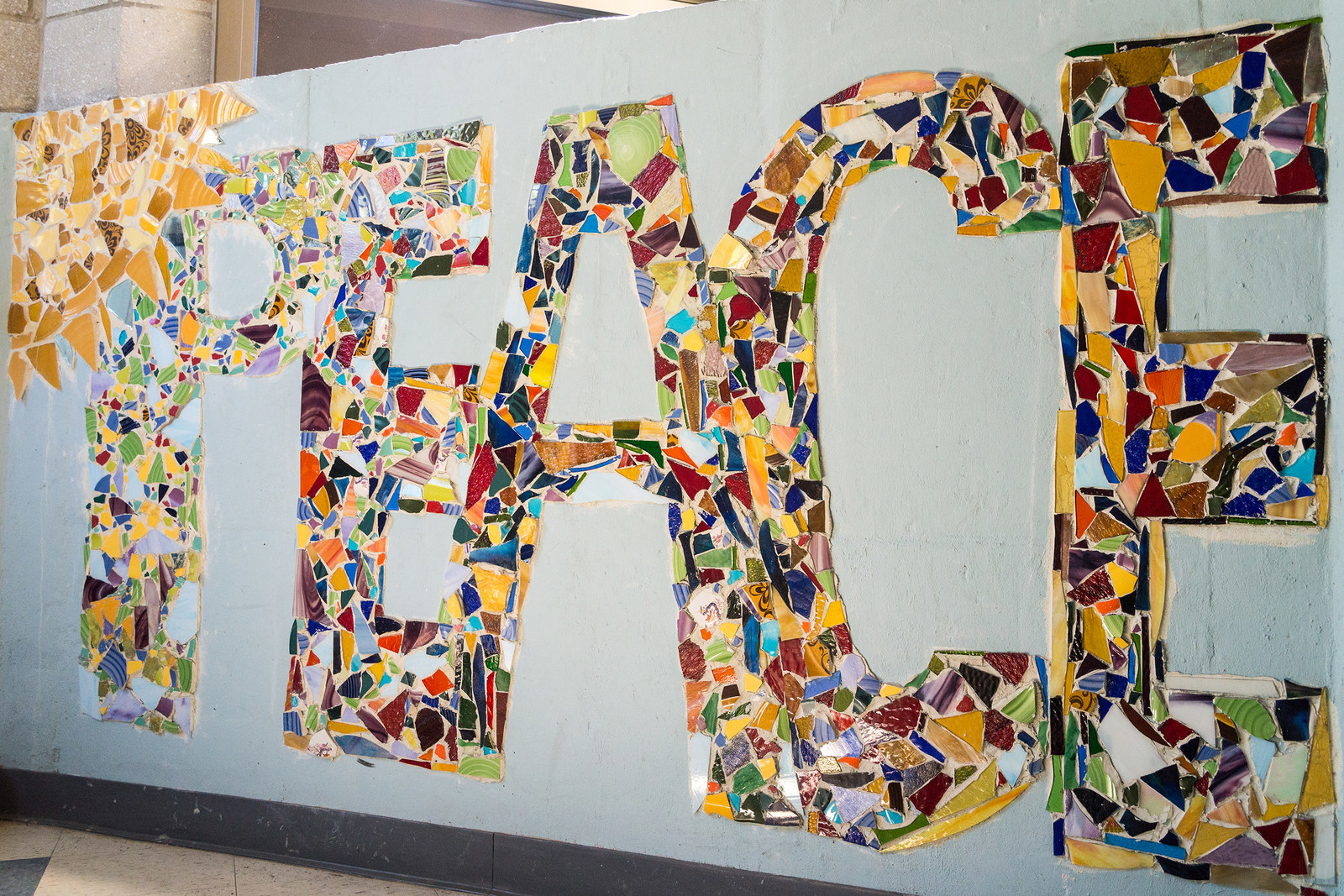
After speaking with BuzzFeed News earlier this month, Moises and his family left for their "credible fear" interview with the office of Immigration, Refugees and Citizenship Canada, which precedes an asylum claim. Their request to file a claim, citing gang violence back home, was approved, and they were then reunited with Moises’ sister, who is married to a Canadian resident.
And now they wait in Canada.
Asylum-seekers usually get their first hearing in two months, unlike in the United States, where they can wait for years. So while a decision on their fate is expected to come relatively quickly, Martha said she was encouraged by the words of the immigration officer who interviewed her.
“They said, ‘Welcome to Canada.’”

